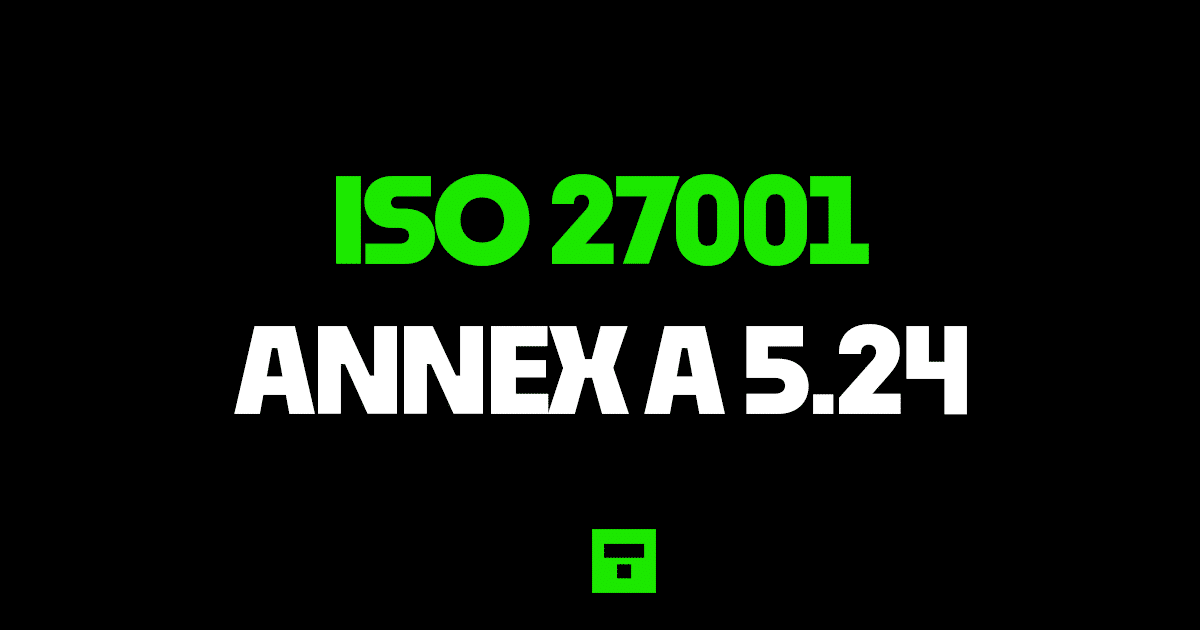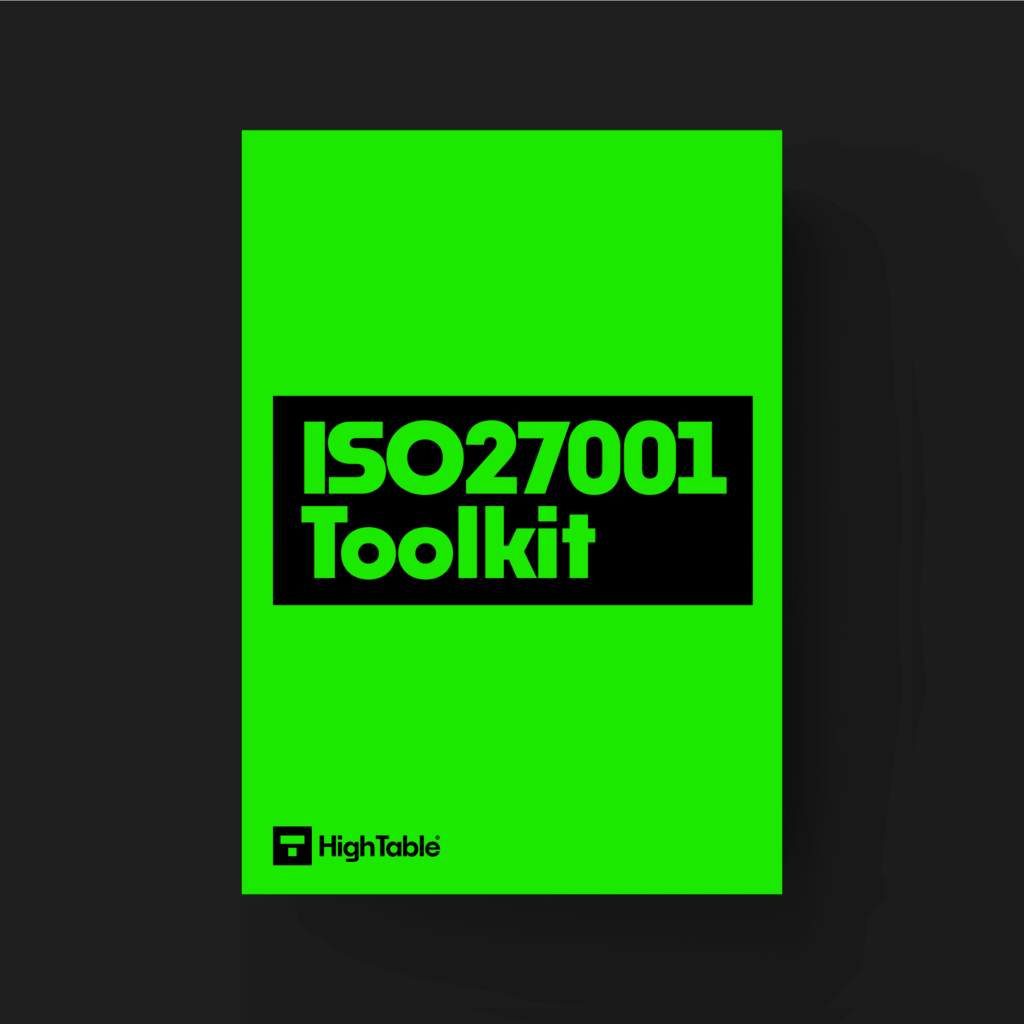ISO 27001 Information Security Incident Management Planning and Preparation
In this ultimate guide to ISO 27001 Annex A 5.24 Information Security Incident Management Planning and Preparation you will learn
- What is ISO 27001 Annex A 5.24
- How to implement ISO 27001 Annex A 5.24
I am Stuart Barker, the ISO 27001 Ninja and author of the Ultimate ISO 27001 Toolkit.
With over 30 years industry experience I will show you what’s new, give you ISO 27001 templates, show you examples, do a walkthrough and show you how to implement it for ISO 27001 certification.
Table of contents
What is ISO 27001 Annex A 5.24 ?
ISO 27001 Annex A 5.24 Information security incident management planning and preparation is an ISO 27001 Annex A control that requires an organisation to plan and prepare for managing information security incidents.
Purpose
The purpose of ISO 27001 Annex A 5.24 is a corrective control that ensures quick, effective, consistent and orderly response to information security incidents, including communication on information security events.
Definition
The ISO 27001 standard defines ISO 27001 Annex A 5.24 as:
The organization should plan and prepare for managing information security incidents by defining, establishing and communicating information security incident management processes, roles and responsibilities.
ISO 27001:2022 Annex A 5.24 Information security incident management planning and preparation
Implementation Guide
Roles and Responsibilities
You are going to work out the roles and responsibilities for the incident management processes and procedures that you are going to write and implement. Those roles and responsibilities are going to be communicated.
Usually you communicate reasonably frequently, say once every 3 months, how to raise an incident and who is responsible for information security in the organisation. Depending how complex the team is and how complex the organisation is you may have to do some additional targeted communications.
Ideally we want a common way to report information security incidents and have a point of contact.
The process of incident management is well documented elsewhere but the process is going to be cover documentation, how we detect incidents, how we prioritise them, if relevant how we triage the incidents, how we analyse incidents, how and to whom we communicate them and how we co-ordinate interested parties.
The standard wants us, rightly, to provide the capability to assess, respond and learn from security incidents. We won’t get things right all the time. Incidents will happen. As long as we plan and are prepared and can respond effectively we will be fine.
When it comes to the who, we are going to make sure that only competent personnel handle issues. Usually this means that they are subject matter experts and or trained in their field. These people will be communicated to and provided the process and procedure documents and will be given periodic training in information security.
As an add in, the standard wants us to consider identifying the training, certification and ongoing development of the incident response assigned people. A great way to do this is via the competency matrix.
Incident Management Procedures
The incident management processes and procedures you write will have priorities and service level’s agreed with management based on agreed objectives for information security incident management. Consider implementing priority levels with definitions of what each priority means and the expected time to resolve an incident at that level.
The incident management plan will consider different scenarios.
If we were to set out the activities that require process and procedure we would include
Evaluation
The evaluation of incidents and understanding which incidents are information security incidents.
Monitoring
The human and automated ability to detect, classify, analyse and report events and incidents.
Managing
The management of incidents that includes response and escalation and knowing when to invoke crisis management and business continuity.
Coordinating
The coordination of internal and external interested parties and resources
Logging
The logging of incidents and associated activity.
Handling of evidence
The handling of evidence and the potential to get specialist help where that evidence may lead to legal action.
Root Cause Analysis
The ability to get to the root, the core, of what happened and why it happened.
Lessons Learned
The ability to learn lessons and make improvements to reduce or eliminate it from happening again.
Reporting Procedures
We need to ability to effectively report on incidents and consider the types of reports that we will create.
We include how to report an incident, the use of incident forms and the creating of incident reports.
External reporting requirements and time frames are considered. A good example is reporting data breaches that come under the GDPR to the supervisory body.
The standard that relates to information security management for further reading if required is ISO/IEC 27035
ISO 27001 Templates
You can save months of effort with these ISO 27001 templates that take 25 years of experience and distill it in a pack of prewritten best practice awesomeness. The ISO 27001 Toolkit is designed to fast track your ISO 27001 certification.
DO IT YOURSELF ISO 27001
All the templates, tools, support and knowledge you need to do it yourself.
How to comply
To comply with ISO 27001 Annex A 5.24 you are going to implement the ‘how’ to the ‘what’ the control is expecting. In short measure you are going to:
- Define and allocate roles and responsibilities
- Write and implement your incident management processes and procedures
- Communicate incident management to interested parties
How to pass an audit
To pass an audit of ISO 27001 Annex A 5.24 Information security incident management planning and preparation you are going to make sure that you have followed the steps above in how to comply.
What an auditor will check
The audit is going to check a number of areas. Lets go through the main ones
1. That you have documented your roles, responsibilities and process
The audit will check the documentation, that you have reviewed it and signed and it off and that it represents what you actually do not what you think they want to hear.
2. That you can demonstrate the process working
They are going to ask you for evidence to the incident management process and take one example. For this example you are going to show them and walk them through the process and prove that you followed it and that the process worked.
3. That you can learn your lesson
Documenting your lessons learnt and following this through to continual improvements or incident and corrective actions will be checked. They want to see that not only did you respond but that you learnt from it and did something to improve that reduced or eliminated the possibility of it happening again.
Top 3 Mistakes People Make
The top 3 Mistakes People Make For ISO 27001 Annex A 5.24 are
1. You didn’t learn your lesson
Not learning and improving is a big mistake. Having your documentation to evidence that you made a corrective action or continual improvement will be key.
2. You didn’t tell people how to raise and incident
The auditor will likely ask everyone they meet, not just you, how to raise an incident. This is bread and butter stuff for them. Everyone being audited as a minimum should know how to raise an incident.
3. Your document and version control is wrong
Keeping your document version control up to date, making sure that version numbers match where used, having a review evidenced in the last 12 months, having documents that have no comments in are all good practices.
FAQ
As the saying goes, shit happens. It is facts of life. No system or security is 100% We cannot be on the back foot when the inevitable happens and effective incident management can eliminate or reduce the impact of information security incidents. In addition there are often legal, regulatory and contractual requirements for effective incident management. It is a no brainer.
ISO 27001 clause 5.24 is about incident management planning and preparation. It requires organisations to establish and maintain procedures for identifying, responding to, and recovering from information security incidents.
Identifying information security incidents.
Incident Monitoring: The human and automated ability to detect, classify, analyse and report events and incidents.
Managing: The management of incidents that includes response and escalation and knowing when to invoke crisis management and business continuity.
Incident Coordinating: The coordination of internal and external interested parties and resources
Incident Logging: The logging of incidents and associated activity.
Incident Handling of evidence: The handling of evidence and the potential to get specialist help where that evidence may lead to legal action.
Incident Root Cause Analysis:The ability to get to the root, the core, of what happened and why it happened.
Incident Lessons Learned: The ability to learn lessons and make improvements to reduce or eliminate it from happening again.
The most common types of information security incidents are
1. Accidental Incidents
2. Malicious Incidents
3. Natural Disaster / Environmental Incidents
Typically they are:
Incident Manager: Managing and coordinating the incident
Incident Response Team: the people responding to the incident
The Legal Team: providing legal advice
The Information Security Team: maintaining the confidentiality, integrity and availability of data.
Communications Team: keeping interested parties appropriately informed
Yes. It is required for ISO 27001.
ISO 27001 Annex A 5.24 Sample PDF in the ISO 27001 Toolkit.
ISO 27001 templates for ISO 27001 Annex A 5.24 Information security incident management planning and preparation are located here in the ISO 27001 Toolkit.
ISO 27001 Annex A 5.24 is not hard.
ISO 27001 Annex A 5.24 will take approximately 1 week to complete if you are starting from nothing and doing it yourself.
The cost of ISO 27001 Annex A 5.24 will depend how you go about it. It will require someone who understands incident management so either you employ someone or allocate it to someone. The cost is the lost opportunity cost of the existing person or the salary cost of the new person.
There are templates for IISO 27001 Annex A 5.24 located here in the ISO 27001 Toolkit.
ISO 27001 controls and attribute values
| Control type | Information security properties | Cybersecurity concepts | Operational capabilities | Security domains |
|---|---|---|---|---|
| Corrective | Confidentiality | Respond | Governance | Defence |
| Integrity | Recover | Information Security Event Management | ||
| Availability |


